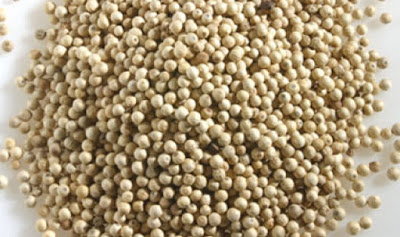The biggest problem faced by the spices industry is the present declining prices, lamented Rumesh Jayasuriya, Chairman, Spices and Allied Products Producers and Traders Association (SPPTA), speaking at the 35th AGM of the SPPTA held at Ramada Hotel Colombo, last week.
By Quintus Perera27 August 2019
The biggest problem faced by the spices industry is the present declining prices, lamented Rumesh Jayasuriya, Chairman, Spices and Allied Products Producers and Traders Association (SPPTA), speaking at the 35th AGM of the SPPTA held at Ramada Hotel Colombo, last week.
He pointed out that the industry has to improve unrestrained innovation and show continuous improvements among growers, plantations, processors, brokers, exporters, etc and noted that the international market has been transformed into a borderless technology-driven market place.
He indicated that the consumers world over are knowledgeable and discerning as they wanted experiences and products that reflect their fast-paced lifestyles and convenience.
On the sidelines of the event, Mr. Jayasuriya told the Business Times that the decrease in the pepper prices could be identified as the main reason for the downfall of spices prices as the Indian Government has imposed a minimum import price (MIP) for black pepper. That is Indian Rs. 500 (Rs.1,250) per kg exported to India.
The imposition of this MIP, he said has made it technically difficult now to export black pepper to India and asserted that earlier these exports were not subject to a MIP in India. He said that the industry is rather concerned of this new development and blamed the government for not negotiating with the Indian Government for its removal.
He said that the delay in the certificate by ISFTA (Into-Sri Lanka Free Trade Agreement) and the SFTA (South Asian Free Trade Agreement) to certain spices such as nutmeg and pepper is also another constraint.
The high cost of production is also another issue where they find difficulties in competing in the international market, as he said that the cost of production is very low in other exporting countries.
He said that there is another danger emerging – that is the illegal importation of spices as there were several occasions of such imports being detected. He was worried that there is no proper legal mechanism to stop illegal import of spices and no proper legal action has been taken to punish those wrongdoers.
More than 70 per cent of spice exports are to Asian and West Asian destinations while the balance goes to Europe and North America, he said.
Dr. A.P. Heenkende, Director General, Department of Export Agriculture, in his keynote address said that despite challenges, spice and allied products is a major contributor in exports.
It was 48,331 metric tonnes (Mt) in 2018 compared to 59,000 Mt in 2017 with the drop attributed to the decline in the export of cloves and Areca nuts. Cinnamon exports grew from around 2016.
He said that US was the main buyer of Cinnamon leaf and bark oils, Citronella oil, Ginger oil and Lemon grass oil in 2018. France, Canada, India, Spain and Germany were the main buyers of Cardamom oil, Clove oil, Nutmeg oil, Pepper oil and Vanilla oil in 2018.
The average annual farm-gate price of Coffee, Clove, Cinnamon quills, Mace, Cardamom and Betel had increased in 2018 while betel exports registered a high price in 2018, he indicated.
He cautioned that Sri Lanka has to rethink on how to find a long term solution for this major problem in the spice sector and said that the government has taken policy decisions regarding the complete ban on imports of Cinnamon, black pepper, Nutmeg, Turmeric and Areca nut.
Ghulam Chatoor, Founder Chairman, SAPPTA, was the guest of honour at the occasion.
http://www.sundaytimes.lk/article/1100123/spices-industry-affected-by-falling-prices
------------------------------------------
WHATSAPP +5511988027709
MAIL manager@peppertrade.com.br
TWITTER : https://twitter.com/peppertrade
------------------------------------------
























